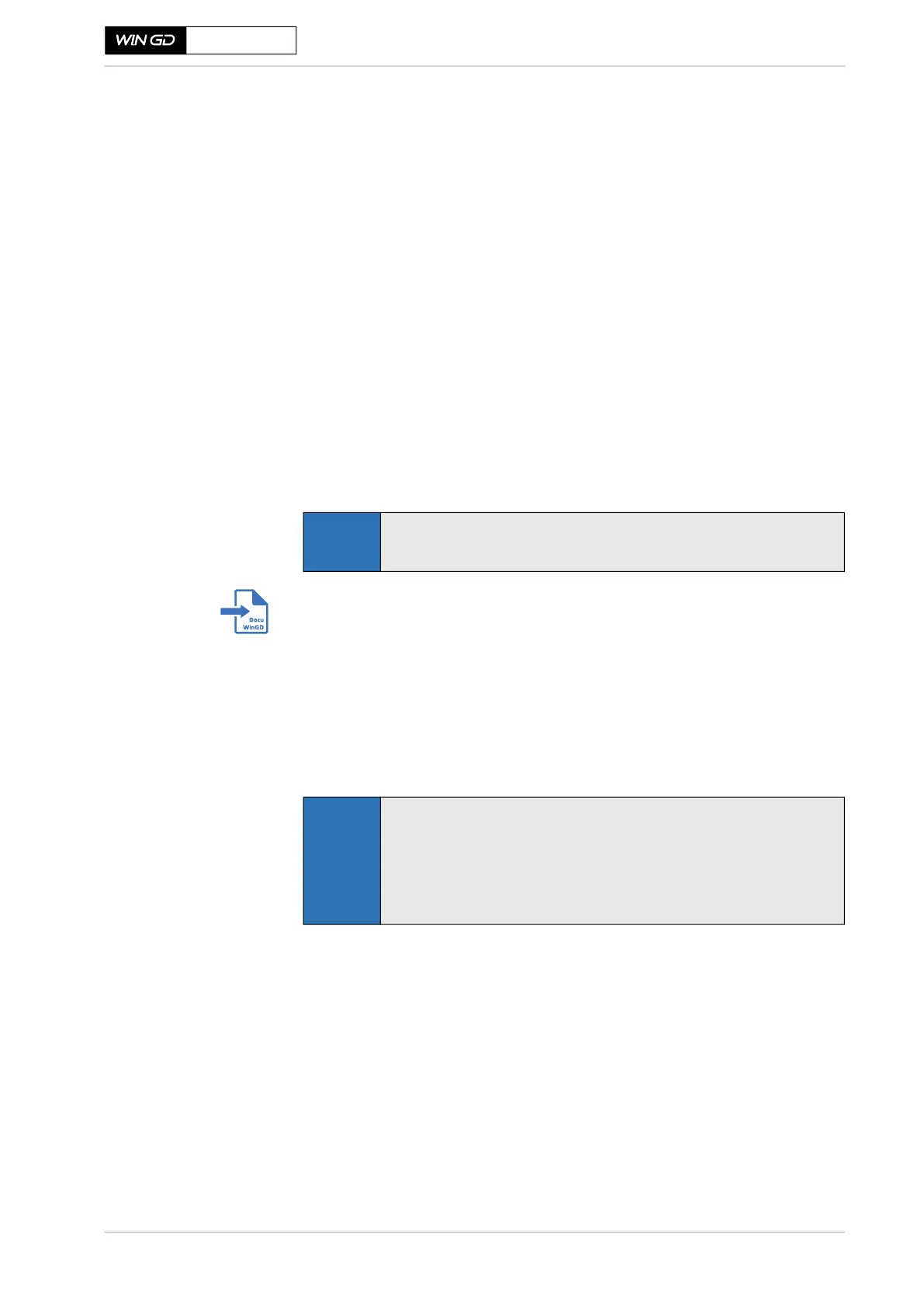Marine Installation Manual 2022-03 4-100
4 Ancillary Systems
4.9 Leakage collection system and washing devices
X62DF-S2.0
It is necessary to consider the required storage and handling temperature of the
NaOH solution. Depending on the concentration, the piping system of the NaOH
dosing unit and storage tank must be heated (e.g. trace heating) and insulated. For
solutions of 50% m/m NaOH, a storage and handling temperature in the range of
27 °C to 37 °C is required. For solutions of maximum 30% m/m NaOH, storage at
normal engine room ambient temperature is sufficient. Due to the corrosive and
dangerous nature of NaOH, extreme caution is required. It is recommended that
a safety shower is located close to the NaOH dosing unit and storage tank. In
addition, the material safety data sheet must be consulted for the installation of
the NaOH dosing unit and storage tank.
Forced bleed-off
Sensors from the EGC circulation water bypass stream also monitor the water
conductivity as a measure of salt concentration within the cooling water. If the
salt level becomes too high, the EGC control unit will force a bleed-off of the
cooling water. The bleed-off function can also be manually activated. Depending
on the available condensate water, the EGC circulation water tank can also be
re-filled by fresh water.
The latest version of the Marine Installation Drawing Set relevant for the
drainage collection from the iCER system can be found in the MIDS cooling
water system drawings (DG 9721), which is provided on the WinGD webpage
under the following link:
MIDS
The MIDS provides a guide for sizing the water drain tank. Project-specific data
sets for bleed-off water and SAC drain water amounts are available for different
ambient conditions in the GTD.
NOTE
When operating in iCER diesel Tier III mode, the circulation water treat-
ment system must be active at all times.
NOTE
The operating time in areas of restricted water discharge (by environ-
mental regulations) must be considered for sizing of the EGC drain
tank.
The hourly drain amount depends on the engine operating profile (i.e.
engine power and ambient conditions) and is provided in the
GTD.
